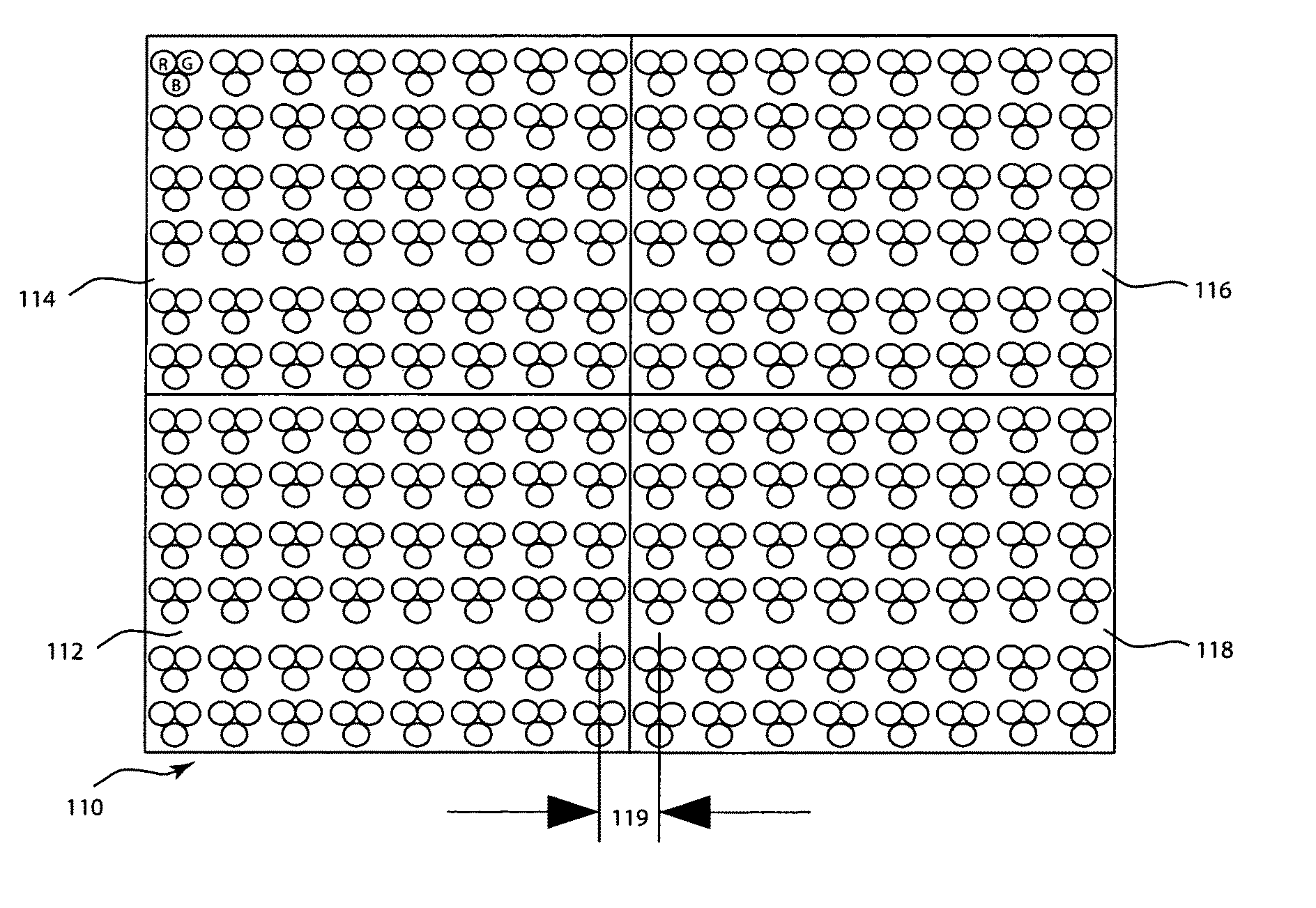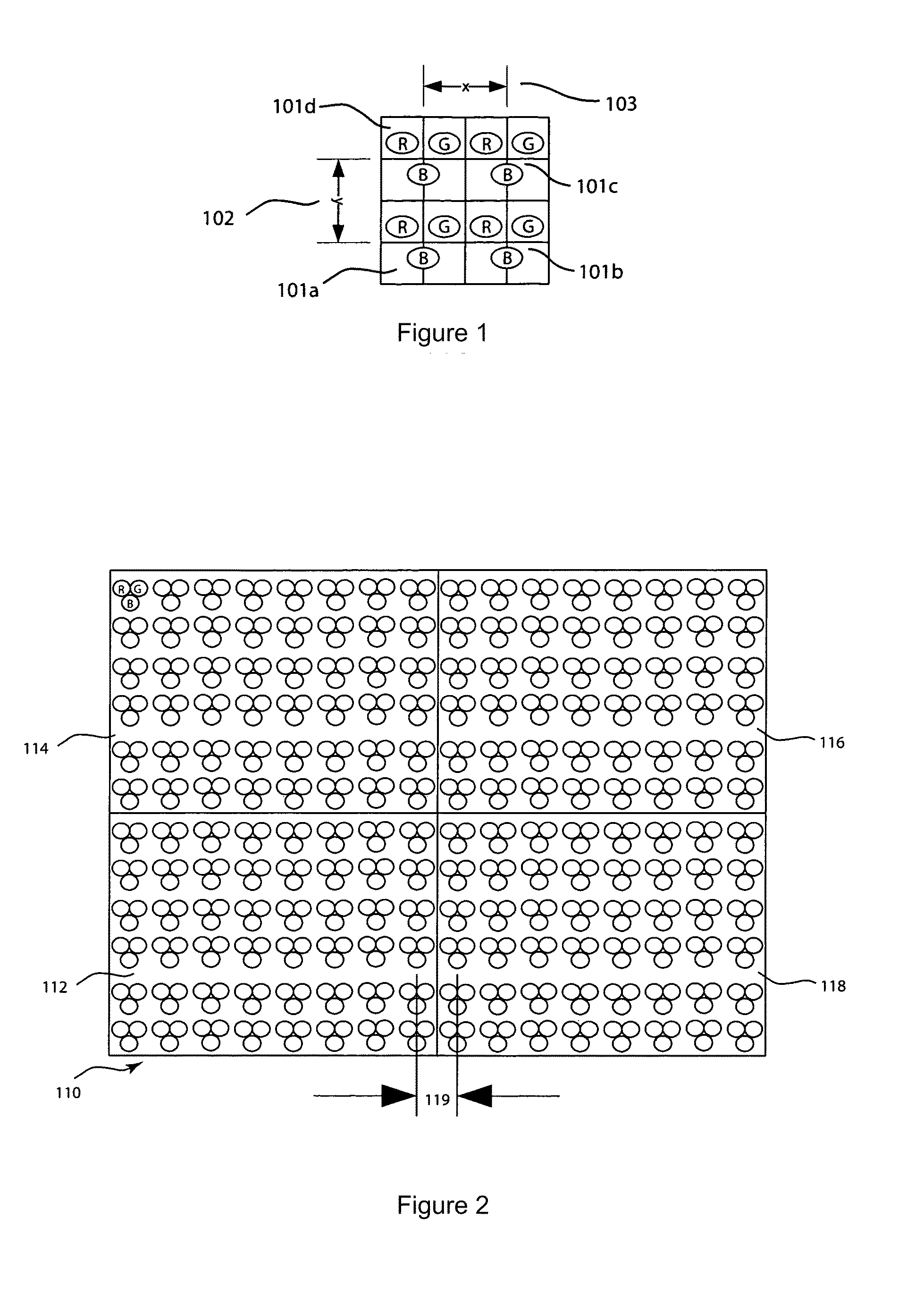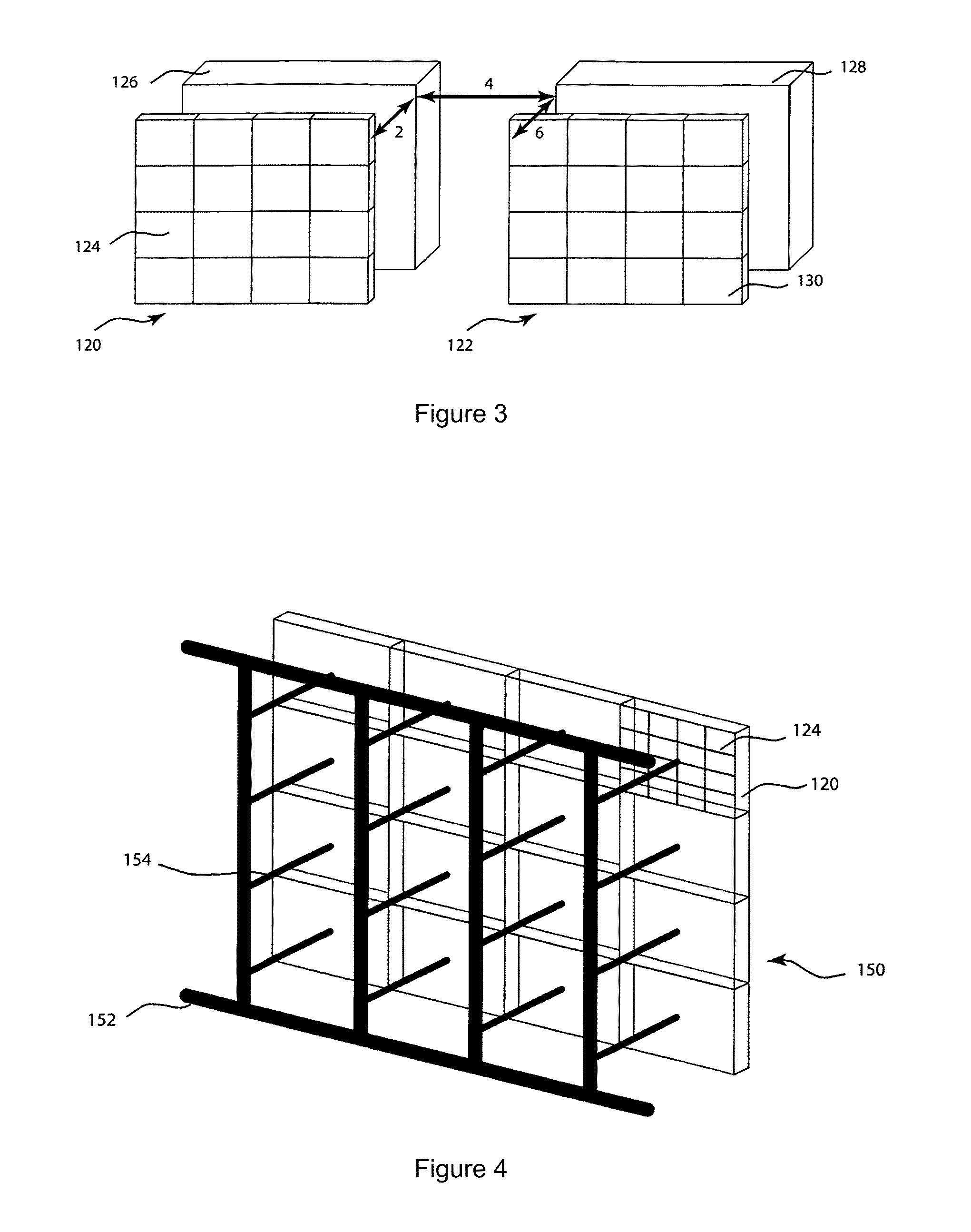Alignment Angle Method and Apparatus for a Display
a technology of alignment angle and display, which is applied in the manufacture of electrode systems, lighting support devices, ceilings, etc., can solve the problems of large errors in overall pixel alignment accuracy, user's typical acceptance of a reduced accuracy, and time-consuming and complex process of accurate positioning of tiles
- Summary
- Abstract
- Description
- Claims
- Application Information
AI Technical Summary
Benefits of technology
Problems solved by technology
Method used
Image
Examples
Embodiment Construction
[0057]FIG. 1 shows four pixels in a video display. Each pixel 101a, 101b, 101c, and 101d may be constructed from 3 LEDs: red (R), green (G), and blue (B). The distance 103 and 102 between the center of a pixel 101 and the horizontally or vertically adjacent pixels is referred to as the pixel pitch. The x-axis pixel pitch 103 may be the same as the y-axis pixel pitch 102.
[0058]In a large display with a large number of pixels it is desirable that the pixel pitch is controlled within tight tolerances. Errors in the pixel pitch across the display may be apparent to the viewer and adversely affect the image quality.
[0059]Some more details on video display products can be found in U.S. patent application Ser. Nos. 12 / 415,627, filed Mar. 31, 2009; 12 / 484,200, 12 / 484,201, 12 / 484,202, 12 / 484,205, and 12 / 484,206, all filed Jun. 13, 2009; and U.S. provisional patent applications 61 / 072,597, filed Mar. 31, 2008, and 61 / 170,887, filed Apr. 20, 2009, which are incorporated by reference.
[0060]FIG....
PUM
| Property | Measurement | Unit |
|---|---|---|
| length | aaaaa | aaaaa |
| length | aaaaa | aaaaa |
| thickness | aaaaa | aaaaa |
Abstract
Description
Claims
Application Information
 Login to View More
Login to View More - R&D
- Intellectual Property
- Life Sciences
- Materials
- Tech Scout
- Unparalleled Data Quality
- Higher Quality Content
- 60% Fewer Hallucinations
Browse by: Latest US Patents, China's latest patents, Technical Efficacy Thesaurus, Application Domain, Technology Topic, Popular Technical Reports.
© 2025 PatSnap. All rights reserved.Legal|Privacy policy|Modern Slavery Act Transparency Statement|Sitemap|About US| Contact US: help@patsnap.com



